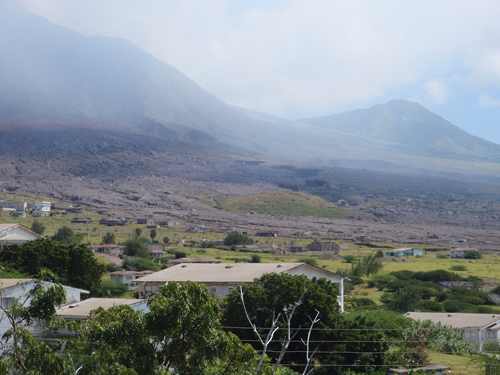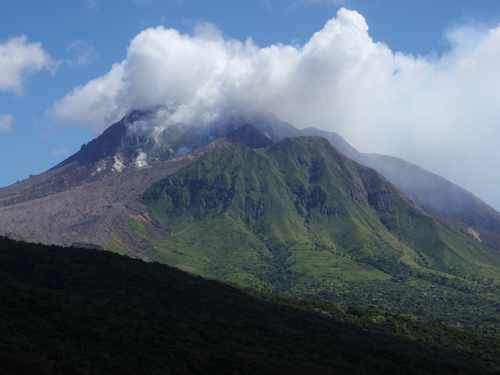Poor Montserrat!

Halsway Grace
Robin and Sue carter
Tue 21 Feb 2012 19:12
|
15:52.44N 61:35.87W
The small island of Montserrat can easily be identified from the
surrounding islands due to its active puffing volcano which erupted in 1995
after 400 years lying dormant. Many will remember the story unfolding in our
press with astonishing film footage of massive amounts of ash and debris being
plummeted high into the sky. It was even more pertinent as Montserrat is a
British Crown Colony.
After several months of increasing activity the volcano finally erupted in
June of that year engulfing the capital town of Plymouth in lava and mud. 5,000
of the 11,000 people had already been evacuated from their homes and many chose
to relocate in Britain or other Caribbean islands. After a further eruptions
2005 and 2008 the southern two thirds of the land were declared an exclusion
zone and so the remaining 5000 inhabitants set about rebuilding schools,
government offices, water and power supplies and businesses in the north which
is thought to be safe.
We anchored in the only safe anchorage in the north, Little Bay
which is now also the main port. The following day Sam Sword our taxi driver
took us and 4 American guys from another yacht on a tour and we were lucky
enough to be allowed to visit the outskirts of Plymouth, having signed to say we
accepted full responsibility for our visit with the local police. The
devastation of what was apparently a beautiful town made us awestruck at the
power a volcano has. The buildings in the centre had been washed away by a
mudslide and the remainder were covered in ash, up to 1 metre deep. We walked
around a hotel whose floor was a foot higher than originally due to ash and
debris. What was so sad was that people left their possessions in their home
thinking that they were leaving temporarily and would then return so books,
glasses, files, kitchen ware and cars were still in the houses now open to the
elements. It was so sad that family photos and personal documents were left
scattered around. 19 people died in the second explosion, mostly farmers who has
gone back to tend their land. Parts of the coastline have now extended half a
mile out to sea by lava flows on the west and east coasts, a challenge to
navigation! There is now a team of vulcanologists stationed at the observatory
monitoring the Soufriere Hills and it is now in a quieter phase which is why we
were able to venture so far.
Some inhabitants have moved back to the middle third (where
there are some lovely houses) aware that they will have to leave if a warning of
renewed seismic activity occurs. Those left are making a go of getting their
lives back again but the main industry was farming, fishing and tourism, all now
mostly gone.
After that experience we continued our journey south and stopped
at Dashais in northern Guadeloupe, this time visiting the wonderful Botanic
Gardens there and then moved down to the Jacques Cousteau marine park for Sue’s
birthday snorkel and meal at a restuarant full of French people with whom
we seemed to be on kissing and hugging terms by the time we left! We have now
moved on to our favourite anchorage at Isles des Saintes before we go back to
Dominica tomorrow.
Here are a couple of photos: the remains of Plymouth and the
offending volcano.
ATB
Sue and Robin
|

